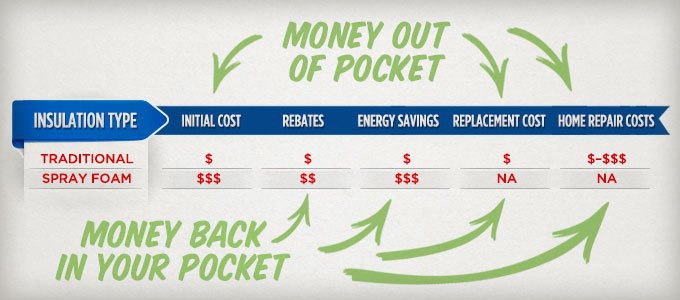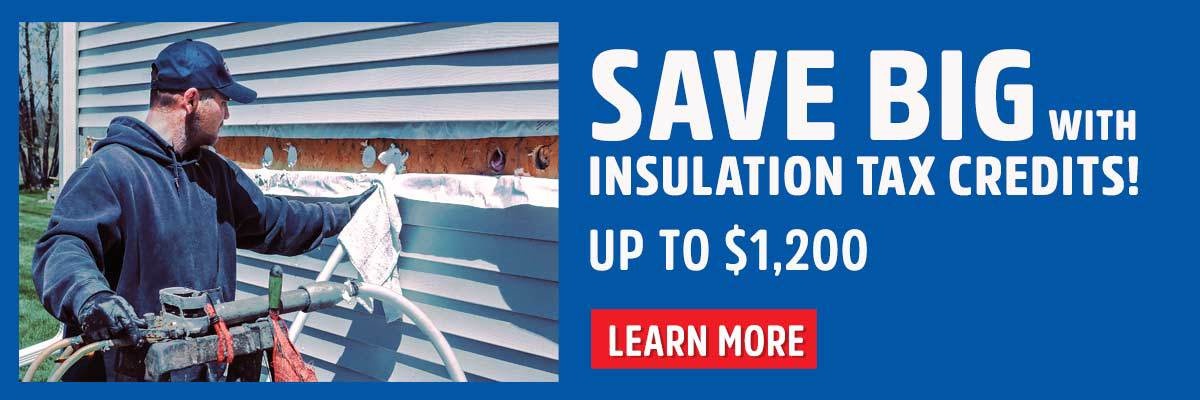Is the Foam Insulation Worth the Cost? Energy Savings Explained
injection foam insulation | spray foam insulation | energy efficiency


When it comes to insulating your home, the initial cost often takes center stage.
But savvy homeowners know it's just as important to consider the long-term savings. Foam insulation, whether spray or injection, not only keeps your home comfortable year-round but also has the potential to significantly reduce energy bills over its lifetime.
RetroFoam of Michigan has more than 20 years of experience insulating thousands of homes across the Lower Peninsula and the greater Toledo area. We understand that homeowners want a product that will keep their homes comfortable while saving them money.
So, how much does foam insulation save, and is it worth the investment? Let's break it down.
The Initial Investment: Cost to Install Foam Insulation

The upfront cost of foam insulation is typically higher than traditional options like fiberglass or cellulose.
The cost to add foam insulation to a whole home can range in price from $8,300 all the way up to $21,700, depending on the size of the project.
While this might seem like a significant expense, foam insulation stands out due to its superior R-Value, durability, and energy-saving potential.
How Much Does Foam Insulation Save in Energy Costs?
Foam insulation is highly effective at sealing air leaks, which are a leading cause of energy waste in homes.
According to Energy Star, homeowners can save 15 percent on heating and cooling costs by air sealing and insulating their homes. Foam insulation can increase these savings by providing a tighter seal compared to traditional insulation.
Here's what those savings could look like:
- Annual Savings: Homeowners report a wide range of savings on their monthly energy bills after installing foam insulation.
- Lifetime Savings: One homeowner stated the foam paid for itself in just five years, so the lifetime savings outweigh the initial cost.
These results can vary based on factors such as your home's size, climate, and current energy efficiency.
Check out what other homeowners have said about energy savings with foam insulation here.
How Much Does Spray Foam Reduce Electric Bills?
Spray foam insulation's ability to reduce electric bills comes down to its superior performance in sealing air leaks and insulating your home.
By creating an air-tight barrier, it prevents conditioned air from escaping and outdoor air from entering, reducing the workload on your HVAC system.
Studies, like the one conducted by Energy Star and independent energy efficiency researchers, show that spray foam can reduce electricity use by up to 30 percent, depending on factors like climate and building type, depending on your home's unique needs.
Home Insulation Replacement Cost
Over time, it is inevitable that fiberglass insulation or cellulose insulation will need to be replaced in your home.
Traditional insulation materials are known to break down, sag, and shift as time goes on. The replacement rate for these materials is around 15 years, not to mention the constant maintenance like raking drifted cellulose in the attic.
Spray foam insulation and injection foam insulation never have to be maintained and never have to be replaced as long as the product is installed correctly, so it is good to hire a contractor with a lifetime warranty once the foam is installed in your home, that is the end of it.
The only exception is when you are doing a major remodel and tearing out areas of the home where foam insulation was installed. This is the only exception to the rule because once foam insulation is installed, it should last for the life of your home.
Is Foam Insulation Worth the Extra Cost?
Foam insulation is an investment in your home's efficiency, comfort, and value.
Here are a few reasons why it's worth considering.
- Durability: Foam insulation can last the lifetime of the home, compared to the 10 to 15-year lifespan of traditional insulation.
- Energy Savings: Foam insulation saves more on energy bills due to its superior sealing and insulating properties.
- Comfort: Homes with foam insulation experience fewer drafts, more consistent indoor temperatures, and better noise dampening.
- Health Benefits: By reducing air leaks, foam insulation helps keep out allergens, pollutants, and moisture that can lead to mold growth.
How Much Energy Does Spray Foam Insulation Save?
The amount of money saved from adding foam insulation can vary depending on the home's construction and your lifestyle.
Some homeowners save around 15 percent, while others see savings upwards of 50 percent on energy consumption for heating and cooling.
If you have windows that allow for air leaks, then you might see lower savings. The same is true if you leave on your lights and TV or leave unused appliances plugged in.
With all of that being said, the tighter your home's building envelope, the less energy your HVAC system has to expend to maintain comfortable temperatures.
Key Takeaways of Foam Insulation Energy Savings
- Foam insulation may have a higher upfront cost, but its energy-saving potential can lead to significant long-term savings.
- Injection and spray foam insulation reduces electricity use by sealing air leaks and improving overall energy efficiency.
- Replacing old insulation with foam can improve comfort and lower energy costs, making it a worthwhile investment.
Ready to Save with Foam Insulation?
If you're ready to improve your home's efficiency and start saving on energy bills, contact us today for a free estimate.
Our team of experts is here to help you determine the best insulation solution for your needs.
Related Articles
Buying Cheap Home Insulation? Consider These 7 Things Before You Sign the Contract
How to Plan and Pay for Your Foam Insulation Cost
How Much Money Will Foam Insulation Save on Monthly Energy Bills?
About Amanda Ringler
Amanda previously has worked as a breaking news and crime reporter, TV news producer, and editor in Flint and Detroit. Throughout her career as a journalist, she has won several awards from The Society of Professional Journalists - Detroit Chapter and the Michigan Press Association. As part of the RetroFoam of Michigan family, Amanda uses her experience as a journalist to write content that will help educate homeowners on the benefits of foam insulation. When Amanda isn’t writing, she’s spending time with her husband and rescued huskies. She also loves knitting, making art, cooking, and hosting dinner and a movie night for friends and family.

.jpg)

